by Naomi | Apr 26, 2016 | Tools & Apps
My playlist is an eclectic collection of tools that help me approach my work as play. Here’s another of my favorites, the Curiosity app, which sparks new ideas and connections.
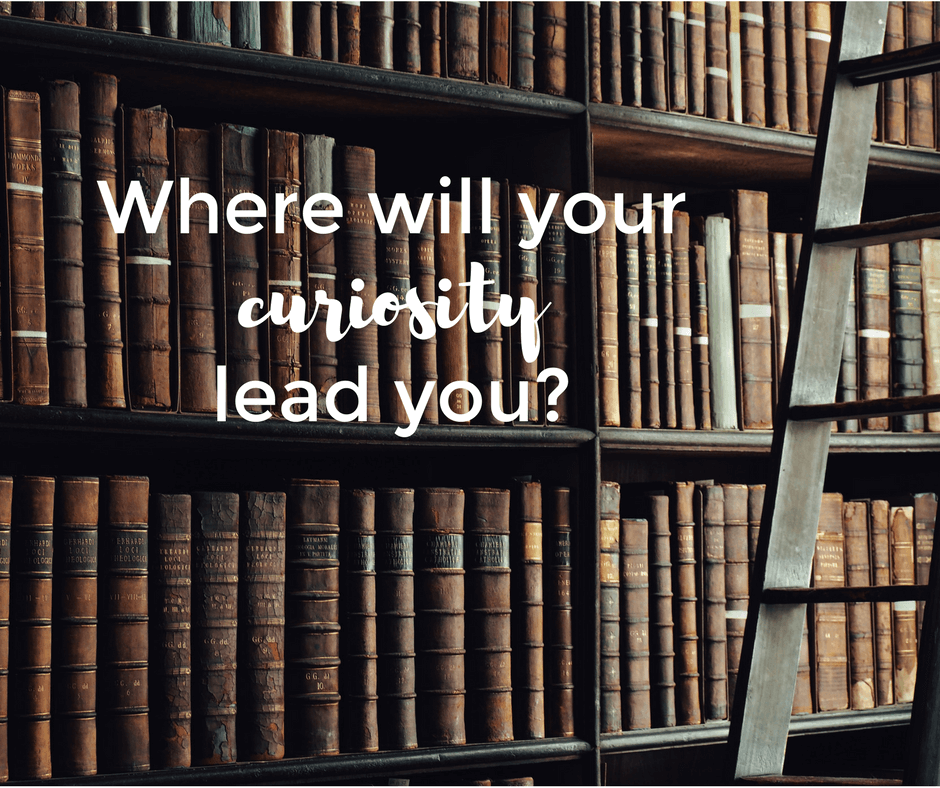
Object: Making learning a regular habit with the Curiosity app.
What Didn’t Work: Trying to remember to take time daily to learn something, spending the time I might have spent learning searching for quality material, learning only about topics I sought out rather than material that might stretch beyond my comfort zone
My Aha! Moment: When I visit classrooms, I love to read the list on the board of all that’s in store for the day. As students arrive in the morning, they stop, read the list, smile over the parts of the day that appeal to them, make a face over the parts that will be a challenge, and after they’re done, they nod. The day’s work is accepted.
Honestly, I miss having a teacher lay out a learning plan for my day. Don’t get me wrong, I love the post-school freedom choose my areas of passion and focus. But I miss the richness of being introduced to ideas and topics I wouldn’t naturally seek out. Divergent thinking is an essential part of creativity. When my exploration narrows to the areas of my current expertise, I can find myself also feeling stuck.
The Curiosity app provides a few articles each day to stretch your thinking in new ways.
How I Play:
- I have a collection of reading material apps, all organized in one folder on my phone. When I need a brain break, I open the one that appeals most at the moment. Often, I choose Curiosity because I know I’ll learn about something unexpected.
- When I find an article I love, I pass it to Milanote, my new favorite creative thinking and note organization app. Then, I can add the information to a visual idea board that can spark future ideas or connections.
Player’s Notes:
- I don’t know about you, but sometimes when I find an engaging (and helpful) tool like this one, I set a bunch of expectations for myself. Oooh! I think. I’ll add a reminder to my to do list and make sure to check this tool once a week. Then, I’ll truly take advantage of all of this amazing material. I went down that path at first, but when I lightened up and just let this be a fun app to check in with every once in a while, I enjoyed it a whole lot more.
Take it to the Next Level:
- Information can easily go in one ear and out the other. If you find something that catches your attention, find ways to engage with the material. Research a little deeper, or share what you learn with someone else.
What other apps and websites stretch your thinking and spark new ideas for you? I’m always looking for excellent new tools! Share below, or tag me on Facebook or Twitter.
by Naomi | Apr 13, 2016 | Creative Life
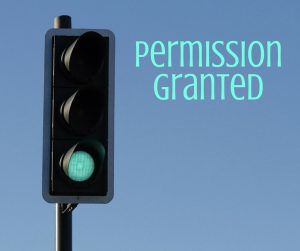
Is there something you’ve been wanting to try?
Do you long to learn something new?
Do you wonder whether it’s okay for you to noodle around on a guitar, or sign up for a drawing class, or try your hand at growing succulents?
I’m wondering … Why shouldn’t you?
When you ask yourself why you shouldn’t, the list probably tumbles out:
- I’ve never really played an instrument before.
- I’m not good enough to be a professional illustrator.
- Neither of my thumbs are green.
And the list goes on. Let’s look at the reasons, though, really look at them. It turns out they’re are all the same.
I’m afraid I might fail.
Somewhere along the way, we cross an invisible line of adulthood. When we do, something terrible happens. We misplace up our permission slip. We decide we’re only allowed to do things at which we will not fail. How do we know we won’t fail? Because we built that skill set when we were kids … back when it was okay to fail.
Don’t miss this … it’s important.
To learn new skills, you MUST fail. You have to try that guitar chord and let it buzz and twang as your fingers build new muscles they don’t yet have. You have to draw a street scene in wonky perspective to learn what your artist eyes don’t yet see. Should kids be the only ones with permission slips for failure? Should you spend 16 or 18 years of your life learning and the rest only repeating those things you already know how to do?
I’d like to give you a permission slip.
I’m giving it to you because sometimes I need one too. Your permission slip doesn’t have qualifiers, such as:
- You may fail as long as you turn your failure into something beautiful
- You may never fail in the same way twice
- You must immediately see what each failure has taught you
Consider the one year old who is learning to walk. Even if she falls down a hundred times, she will keep pushing herself to her feet and trying again. She knows that eventually she will walk, it’s only a matter of time. She’s not keeping score, moving toward an ultimatum. “If I can’t walk without falling down by tomorrow, then …”
Then what?
We all need a permission slip because every once in a while we need a reminder that it’s truly okay to be right where we are, smack dab in the middle of our messy learning process. It’s okay for us to try and fail and try and fail, and then take a break and try again. And it’s okay to decide after a while that the guitar isn’t for you. Just make sure you’re not putting the guitar down as a punishment for your lack of super-star skill. Your permission slip doesn’t expire.
You are allowed to be a learner.
In fact, being a learner makes you an interesting, attractive person. When you publicly share your learner status, you give others permission to be learners too. What if being a learner was catching? What if because you decided to take voice-over lessons, your best friend decided to try writing a picture book? And what if her brother, while watching her write a picture book, signed up for an animation course? And what if one day that picture book was published and as a team, the three of you, plus a few new friends, created an animated short feature … which not only was a joyful collaboration but ended up inspiring a whole classroom of students to try writing stories of their own … and on and on and on it could go.
Let’s pass out permission slips this week.
No, honestly. Let’s actually do it. Let’s hand-write permission slips and leave them for loved ones to find. Slip them under pillows or into lunch bags. Let’s help one another see that we do, in fact, have permission. Let’s remind one another that it’s truly okay to play around, to experiment. And while you’re at it, make a permission slip for yourself, too. Decide what outrageous thing you’re going to try, not because you’re going to take this on as your new career, but because you want to give it a whirl. I’d love to hear how it goes. Will you tell me the story below in the comments? Or you can tell me on Facebook or Twitter. Anywhere, really. I’d love to hear your permission slip story. I can’t wait to cheer you on as you play around and have some fun. Go ahead. You have permission.
—
Psst… Do you know about Naomi’s Tinder Box: a weekly collection of curated resources, inspiration and encouragement? Keep your creative spark ablaze … sign up for exclusive access here.

by Naomi | Apr 6, 2016 | Creative Life
When we don’t leave room in our plans, we squash the possibility of surprise. What’s worse, we often don’t realize we’re limiting ourselves.
Picture two actors onstage, beginning an improvised scene.
Actor One: (pointing frantically) Oh no, look, it’s a Tyrannosaurus Rex.
Actor Two: (leaning forward) And look, he’s nodding at us. I think he’s trying to tell us something.
Actor One: He’s running straight toward us! Run!
Actor Two: (running along behind Actor One, looking over her shoulder) I wonder if we should try to talk to him?
Actor One: He’s a monster. AGGGGH! Run!
Actor Two can’t salvage the scene, and ends up running offstage with Actor One. The scene is over.
In improv, we call this scenario “saying no.”
Actor One began the scene planning for a T-Rex to chase her offstage. No matter what her scene partner said, Actor One insisted the scene go as she planned. She said no to all the options and possible surprises Actor Two introduced.
Why might this happen?
Actor One might be feeling nervous. The audience is watching, and the silence is lengthening. So, she blurts out the first thing that comes to mind. There’s a T-Rex! Good! Drama. Danger. The silence is broken. But Actor Two, relieved of the burden of introducing the first idea, sees the dead-end problem in the scene. Two actors shrieking and running away isn’t really a scene. So, Actor Two introduces the possibility that this T-Rex isn’t like other dinosaurs. If Actor One allows this new idea to develop, something interesting might happen. Neither actor is responsible entirely for the success of the scene. Both actors are likely to be surprised. When actors are bold enough to say yes to the unknown, interesting things can happen.
Often, we say no in our real lives, too.
- We have a firm agenda for a meeting or class and refuse to be sidetracked, even when interesting opportunities for learning or exploration arise.
- We mentally script a conversation or confrontation and don’t leave room to listen and respond in real time.
- We schedule our days to their very edges and don’t leave room for serendipitous detours.
Unfortunately, the solution isn’t as easy as throwing plans out the window. Classes, confrontations, and even day-to-day schedules suffer if we don’t prepare at all. Maybe here, we can learn a thing or two from improvisational actors.
- First, improv actors know that improvisation is a skill to be practiced and refined. It’s not a “who cares, I don’t need a script” attitude. Rather, improv actors shift their focus from practicing for ONE predictable scenario into practicing for a MULTITUDE of scenarios. They practice listening, saying yes, and adding ideas to move the game forward.
- Second, improv actors know that every scene is an experiment. Some will work better than others, and some will completely fail. They accept the failures as part of the learning process.
- Third, improv actors build possibilities in the spaces between people, rather than limiting the options to their own experience, ideas and skill set. They aren’t afraid to collaborate and to allow others to help.
Recently, I’ve been challenged to take steps forward into new territory–artistically, professionally, and personally. What’s fascinating is how pertinent my improv training continues to be, no matter how far the challenge is from an actual stage. It turns out that improvisation can be a training ground for real life. As in on-stage improv, when you approach life’s situations with an open-for-surprise attitude, delightful things can happen.
I wonder: In what life situation might you practice the art of improvisation? I hope you try it, and if you do, share your story on Instagram or Twitter and tag me. I’d love to hear how the experiment goes for you.
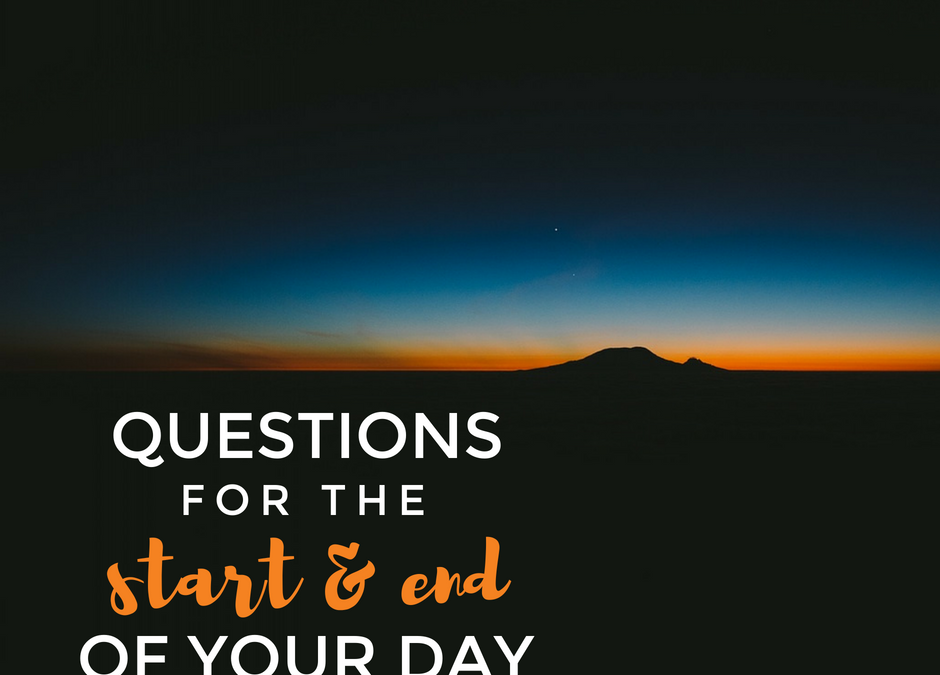
by Naomi | Apr 1, 2016 | Creative Life
In The Art of Possibility, Rosamund Stone Zander and Benjamin Zander point out that this harmless little question might not be so harmless after all. Why? Well, the underlying question for most of us is, “What did I accomplish today?” And the danger is that we’re measuring the value of our day based on our answer.
If you’re a novelist and you spend the day working on a difficult passage, ending up with 500 words, it’s all too easy to judge the day a failure. Only 500 words today. Or, what if at the end of a day of teaching, you realize that you spent most your time resolving a heartfelt conflict in your classroom but hardly any time on spelling?
Asking the wrong question leads to the wrong answer. And the wrong answers, over time, lead to skewed thinking, poor decisions, and too often, a sense of discouragement and confusion.
And yet, reflection is an important part of growth. The momentum that growth brings is key to staying motivated and engaged.
So … What helpful reflection questions might we ask ourselves at the end of the day?
Here are a few I’m going to try.
- When did I feel grateful today?
- When did I feel connected today?
- When did I listen to someone today, and what did I hear?
- What did I learn today?
- What challenged me today?
- What made me curious today, and how might I explore my questions tomorrow?
Donald Miller used to have a course about life-planning. In it, he encouraged people to ask themselves in the morning: “If I could do today over, what would I do differently?” Projecting yourself to the end of the day and thinking about what honestly matters shifts the day’s focus from that addictive to-do list to something more lasting and important.
I’m enjoying the experiment–these book-end question sessions at the start and end of the day. Want to try it out too? I’d love to hear about your experience. Tag me on Instagram or Twitter and let’s chat about it. In the meantime, here’s to you and your creative journey.
by Naomi | Mar 31, 2016 | Creative Life
Patricia Newman is the author of numerous books, including Plastic, Ahoy! Investigating the Great Pacific Garbage Patch, and Ebola: Fears and Facts. She is a passionate literacy advocate and profiles authors and illustrators for California Kids, a regional parenting magazine. I was delighted to have the opportunity to chat with Patricia about creativity and writing for one of her thoughtful profiles. Here’s an excerpt from our interview.
—
INTERVIEW WITH NAOMI KINSMAN by PATRICIA NEWMAN
Naomi Kinsman weaves her life around the creative process. Not only plumbing the depths of creativity for her middle-grade novels, but in teaching children and adults to find their passion for their stories. She started the Society of Young Inklings about eight years ago—named for C.S. Lewis’ and J. R. R. Tolkien’s Inklings group—to help children find their voices as writers. Naomi and I are represented by the same literary agency, and our paths frequently cross in the writing world. Her devotion to her craft is both inspirational and instructive. I spoke to Naomi by telephone to find out more about her creative process.
Patricia: Is there a childhood memory that sticks out in your mind?
Naomi: I was a very, very shy child. When I was in second grade, my mom took me to see a production of Annie, and I saw this little girl up on stage and she was exuberant and boisterous and I wanted that opportunity to try on a different personality. Around the same time our school was doing a musical called “Totally Buggy.” There was this character, a ladybug, who had this beautiful jazzy solo. I had my heart set on being the ladybug, but I couldn’t bring myself to audition. I admitted to my friend that I wanted the part. She got me to sing while we were alone on the swings. “The wind will be so loud I won’t be able to hear you,” she said. We did that day after day, and we got louder and louder. One day in class the girl who was the ladybug was sick, and the teacher asked for volunteers. Somehow I raised my hand. Everyone looked at me. No one thought I would do it, but I sang. I remember hearing my own voice in my ears, having my class look at me, and saying to myself you can do the impossible thing.
Read more …
—
Psst… Do you know about Naomi’s Tinder Box: a weekly collection of curated resources, inspiration and encouragement? Keep your creative spark ablaze … sign up for exclusive access here.
by Naomi | Mar 24, 2016 | Creative Life
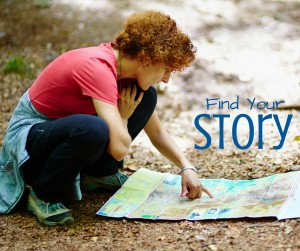
How do you consume stories? Do you read them? Listen to them? Watch them? Play them out? How many stories have you consumed today? This week?
I’ll venture to guess that stories are a staple of your every day diet, and not just because you’re the kind of person who reads this blog. There’s a reason brands use stories as the foundation for multi-million dollar commercials such as the ones aired during the Super Bowl.
Humans crave stories.
Donald Miller, as part of his Storybrand workshops, points out that stories are built on patterns. Those patterns create clarity in the human mind. In a well-crafted story, a character has a problem and sets out to solve it. Through the story’s twists and turns, the character strives for the desired solution, and in the end he or she either achieves success or does not.
But the point is: We KNOW what the character wants. We can see the character’s progress. We have a mental picture of what success looks like. All the twists and turns in the story are given meaning, when viewed in light of the goal.
Often, life doesn’t feel that clear.
First of all, it’s not easy to figure out the exact problem and identify a clear solution or goal. Maybe we want fourteen things all at the same time. Or maybe we know what we want but we doubt our motives. We want external guidance and assurance that we’re headed in the right direction.
Second, it’s not easy to gauge success. When we watch a character try to solve a problem, we can usually read into his or her internal reasons for needing that problem to be solved. Maybe externally, the Three Pigs each want to build their own houses. But what they really need is a safe place to live. When they end up together in the brick house, safe from the wolf, their deeper longing has been met. They are safe. In our real lives, when we don’t reach our external goals, we feel frustrated. Even if our internal problem is solved, we may not realize that is the case, leaving us feeling foggy and uncertain. We wonder: Have I made progress? Often the missed goal blinds us to the actual success.
But is the story pattern impossible to see in our own lives?
No. Not impossible. And when we do glimpse the story pattern, every twist and turn and challenge and success becomes that much more meaningful. The fog on the path ahead clears, and we see how to carry our life story forward.
Here are some questions I find helpful when reflecting on my own life story.
- What goals am I working toward? (I often look at six key areas of my life when asking this question: core, creativity, commitment, connection, cultivation, casting dreams. More on those categories here.)
- Why? (I ask the question about each goal, and list all the answers that come up.)
- And that’s important because …? (I look at the answers and push myself to go a little deeper. These second tier answers are usually closer to my real reasons.)
- Is there an overall goal that ties these goals together? (Stories make more sense when they are unified. An overall goal might be “I want to be healthy in body, relationships, mind, and spirit.”)
- Am I just starting out or have I been on this journey for a while? (You can decide whether to look at a small, recent story or one that you’ve been telling for a long time. The size of the story is up to you. The goal is to choose a story that is meaningful to you at this current stage of your life.)
Question five can be the basis to draw a map for your life story. Where are the notable successes and where are the setbacks? The more whimsical the map, the more it can transform your experience into something objective that you can look at from the outside. The map then becomes a living document that can accompany you on the journey.
I hope you’ll try this process out for yourself. Over the past couple years, I’ve used a map to chart the story of my year. I’ve gained so much perspective from seeing my story told in this visual, streamlined way. I hope the same is true for you! Feel free to share your story below, or share with the greater community on Facebook or Twitter.
—
Psst… Do you know about Naomi’s Tinder Box: a weekly collection of curated resources, inspiration and encouragement? Keep your creative spark ablaze … sign up for exclusive access here.
by Naomi | Mar 7, 2016 | Creative Life
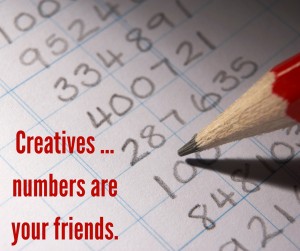 I’ve never been much of a numbers girl. When someone asks what nine times twelve is, I’m reminded of those pages filled with multiplication problems and the clock tick, tick, ticking away. Even now, the memory makes my heart take flying leaps against my rib-cage.
I’ve never been much of a numbers girl. When someone asks what nine times twelve is, I’m reminded of those pages filled with multiplication problems and the clock tick, tick, ticking away. Even now, the memory makes my heart take flying leaps against my rib-cage.
Because of my number dread, I don’t capture data in numbers very often. For the most part, I rely on intuition and my memory.
The thing is, memory can be tricky. Stories can be revised. Intuition, while wise, can also be skewed. What I’ve learned recently is that whether you’re a numbers person or not, numbers are invaluable when it comes to creative problem-solving. It turns out, numbers are our friends.
Yep, you read that right. Numbers are our friends.
As a creative person, I constantly have new ideas sprouting up here and there and everywhere. I’m easily tricked into thinking that I can add “just one more thing” to my already full day. Were I to look at the numbers, I’d see that a day has 24 hours. Some of those hours are required for sleeping, eating, exercising, laughing … There’s a finite number of “just one more things” that a day can hold. The number 24 provides a distinct, specific problem to solve. How will I spend my 24 hours today?
Improvisational actors know that in order to create a great scene, a set of givens is required. The givens lead to interesting questions, and interesting questions lead to unexpected solutions. If the scene must include an elephant, an umbrella and a pickle, the actors can then work on how to make those things happen. The how is what makes the scene hilariously clever.
When you ask yourself, “How might I … ” along with a specific problem to solve, you’re likely to come up with a list that includes a few unusual and delightful solutions. But when you ask yourself, “What should I do about … ” and ponder a vague problem you’re facing, you’ll probably feel frustrated, blocked and stumped.
Let’s try it ourselves:
Q: How much time is there in your week?
A: This one is the same for all of us … 168 hours.
Q: What are your firm commitments and how many hours do they take on average?
A: This one is variable, but includes sleep, exercise, meals, family, and other non-negotiables.
Q: How much time is left over?
A: Time – Firm Commitments = Left Over Time
Q: How might you creatively utilize your left over time?
Let your mind roam here. You’ve done the hard math part, and now you can use your creative gifts. Explore the preposterous, turn the problem on its head, transform the boundaries into opportunities. See what you can come up with. Here’s the excellent news. This strategy goes far beyond offering solutions for your current time crunch. Now, you have a roadmap for tackling all those pesky life questions which have been bugging you.
The process goes like this:
- Gather the numbers and specific givens.
- Allow the numbers to shape a clear understanding of the problem.
- Use that understanding to shape a “How might I … ” question.
- Tap into your creativity to brainstorm a list of possible answers …
- And THEN listen to your intuition to choose which solution to try first.
Give your solution some time to kick in, and then check your results against the numbers. Now, you have a process that allows you to experiment and refine rather than inventing the wheel over and over, having no idea whether you’re making progress at all.
Now, here’s the thing. If you’re anything like me, gathering the numbers will be a little bit painful. Your creativity will lurch and struggle against the hard, firm lines of reality. And yet, that lurching and struggling is actually energy building, energy that will throw itself eagerly into problem solving as soon as you set it free. I promise that the pain is worth the results.
Will you try it for yourself? I hope you do. And when you do, let me know how it goes. Post in the comments below, or share your story with me on Facebook or on Twitter. I can’t wait to hear about your successes!
—
Psst… Do you know about Naomi’s Tinder Box: a weekly collection of curated resources, inspiration and encouragement? Keep your creative spark ablaze … sign up for exclusive access here.
by Naomi | Feb 26, 2016 | Creative Life
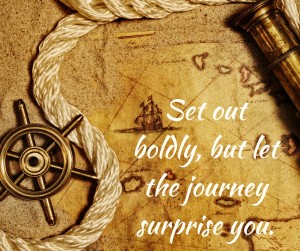 Dorothy wanted to find her way home. Harry Potter longed to have his parents back. Luke Skywalker craved an epic adventure. These desires were strong, strong enough to cause Dorothy, Harry and Luke to take action and say yes to the unknown. But by the end of these stories, the goals the characters started out with had changed, grown, and transformed.
Dorothy wanted to find her way home. Harry Potter longed to have his parents back. Luke Skywalker craved an epic adventure. These desires were strong, strong enough to cause Dorothy, Harry and Luke to take action and say yes to the unknown. But by the end of these stories, the goals the characters started out with had changed, grown, and transformed.
One of the most important things my writing has taught me is about the dynamic nature of goals. Namely, I’ve learned that in the best stories, the adventure transforms the goal. Characters may not end up with everything they originally wanted, but they do end up with what they need. Let’s put that a different way, into real life terms.
When we set out to pursue a goal, we may not gain everything we originally wanted, but if we commit fully, and hold our goals with open hands, we will likely end up with what we need.
I have to say, if there is a way for me to gain “what I need,” I’m definitely all for diving in fully. How about you?
Let’s break this down a bit and take a look at what dynamic goal setting looks like.
DECIDE TO TAKE A JOURNEY: First, we check in with ourselves and listen to what is calling our hearts. We ask: What am I longing for?
DRAW YOUR MAP: Then, we set the best goal we can, given the information we have. We write the goal down and post it visibly.
START AT THE TRAILHEAD: Next, we commit fully. We aim for the goal and give the process our full effort. We research and discuss our goal with experts and learn and take action.
LISTEN TO FELLOW TRAVELERS: Now here’s where dynamic goal setting differs from traditional goal setting. Rather than putting up our blinders and pushing on no matter what, we listen. We pay attention to unexpected opportunities that arise. We don’t put in our ear plugs when people we trust challenge us to see our blind spots.
NOTICE THE SIGN-POSTS: We are thoughtful about sidetracks, shortcuts and complete re-routes. We don’t follow every shiny object. We watch for patterns. Most importantly, we take time to slow down and reflect on the question: Is this where I need to go next?
JOURNEY ON: We continue to move forward confidently, allowing our destination to shift as needed, and making sure to collect all of our learning along the way.
CELEBRATE EACH VISTA: When we reach a vista, we stop and reflect, noting how far we’ve come. We write these down too, or record them in some way, so we can keep a running travelogue of our journey. Sometimes a vista is a good time to start the process over again, setting a new goal. Other times, the journey continues onward.
A final thought for travelers …
Often, what we need doesn’t match what we want because our deep, true needs usually involve change and growth. Growth nearly always requires discomfort, and sometimes is even downright painful. In an ideal world, we’d want life to be easy and pain-free. And yet, to me, a pain-free life that I drift through, never growing or learning, sounds miserable. I don’t want to be the same person I am today in ten years. I’m grateful that my experiences to this point have added a richness to my life that it didn’t have when I was 20.
I love how Henry Cloud describes the pain of growth in is book, Necessary Endings. He points out that while we might not describe having a tooth pulled as “good,” once the infected tooth has been removed, we can then heal and move forward. The experience was a positive one, even if we wouldn’t choose to repeat it.
What if, a year from now, you could look back and say, “I’ve had an Alice in Wonderland year.” or “I’ve had a Bilbo Baggins year.” Would you be willing to risk the hardship if you knew you had the opportunity to gain whatever it is YOU truly need?
—
Psst… Do you know about Naomi’s Tinder Box: a weekly collection of curated resources, inspiration and encouragement? Keep your creative spark ablaze … sign up for exclusive access here.
by Naomi | Feb 22, 2016 | Tools & Apps
Naomi’s Playlist is an eclectic collection of tools that help me approach my work as play. My hope is that they’ll do the same for you!

NOTE: This post is part one of a now-and-again collection of Playlist posts focused on various Evernote strategies. Evernote is one of those powerful tools that can solve a multitude of challenges, so it’s useful to drill down and focus on individual strategies one at a time.
Object: Taming the information tsunami
What Didn’t Work: Drowning in potentially useful information, having non-actionable emails fill my inbox, coming across free reports and blog posts I wanted to review “someday,” and feeling constantly further behind.
My Aha! Moment: I’ve certainly heard that one should deal with each email only once. Also, I’m aware that I shouldn’t let every potentially helpful piece of information interrupt my train of thought. The trouble is, I also know that when I want ideas for conferences to attend, or fun activities for the weekend, or resources to help me more effectively use Twitter, I appreciate the kick-start that a collection of resources can give me.
But, just letting the information pile up wasn’t helping me. Not only were the piles overwhelming my inbox and desk, when I wanted information, there wasn’t any simple way to access it. The result? I’d start my research by “trying to remember” that one helpful tool I saw once.
Yep. Not very effective, and totally slow going.
I was already using Evernote, but the steps required to save something to Evernote kept me from using the tool. I had to decide which notebook to use, which tags to use, and most of the time, I ended up with messy files anyway. I needed a split second way to put items effectively into Evernote. That’s when I found Michael Hyatt’s post on Evernote. (Warning: if you’re trying to onboard Evernote in small steps, his post may be a bit overwhelming).
Here’s what’s most pertinent to our current discussion. Rather than using lots of different notebooks among which you must constantly choose, Michael suggested using two. What you need is an “Inbox” and a “Cabinet.” Evernote defines these buckets as “notebooks,” but I find it more helpful to think of them as a physical inbox and a physical filing cabinet.
When I made this change, Evernote became simple for me. My inbox was my standard notebook, where all incoming notes collected. Then, in slow moments, I’d fly through the entire list, tagging and sending the notes into the cabinet.
Now, there’s more to how I use Evernote, and how I make tagging easy, but for now, let’s focus on this immediate strategy that’s sure to give you immediate relief.
How I Play:
- I have my gathering tools set up to send items to my inbox. The main gathering tools are likely your web-clipper, your scanner and scanning software, and any email helper app that you use.
- When I determine that an item (webpage, blog post, email, etc) is information that I may someday want, I send it to my inbox.
- In those moments when I’m in between meetings or in need of some mindless work, I tag and re-file my notes into my cabinet.
Player’s Notes:
- I don’t worry about notes piling up. The great thing about Evernote is that when you search, it goes through the text of every note. Even if your note isn’t perfectly filed, it will likely come up when you search. And tagging and filing 100 notes doesn’t take too long if the task has your full attention for a few minutes.
- Most Evernote gathering tools allow you to set a reminder date. If the note is timely and you want to be reminded on a certain date, set a reminder as you send it to your inbox.
- When you want to share a subset of notes with a team-member or a group, you WILL need a separate notebook to share with them. Try not to get hung up on the rule of only having two notebooks. While having only one inbox and one cabinet is ideal, reality will probably force you to maintain a couple extras. Especially in those cases, the inbox is a fantastic capturing tool so you can then re-route as needed.
Take it to the Next Level:
- If you have time, and you know your tags well enough, you can always tag a note and send it directly to your cabinet. Most tools allow that, too. The beauty of the inbox is that it’s there for you if you need it and can always be bypassed if you don’t.
—
Psst… Do you know about Naomi’s Tinder Box: a weekly collection of curated resources, inspiration and encouragement? Keep your creative spark ablaze … sign up for exclusive access here.
by Naomi | Feb 17, 2016 | Creative Life
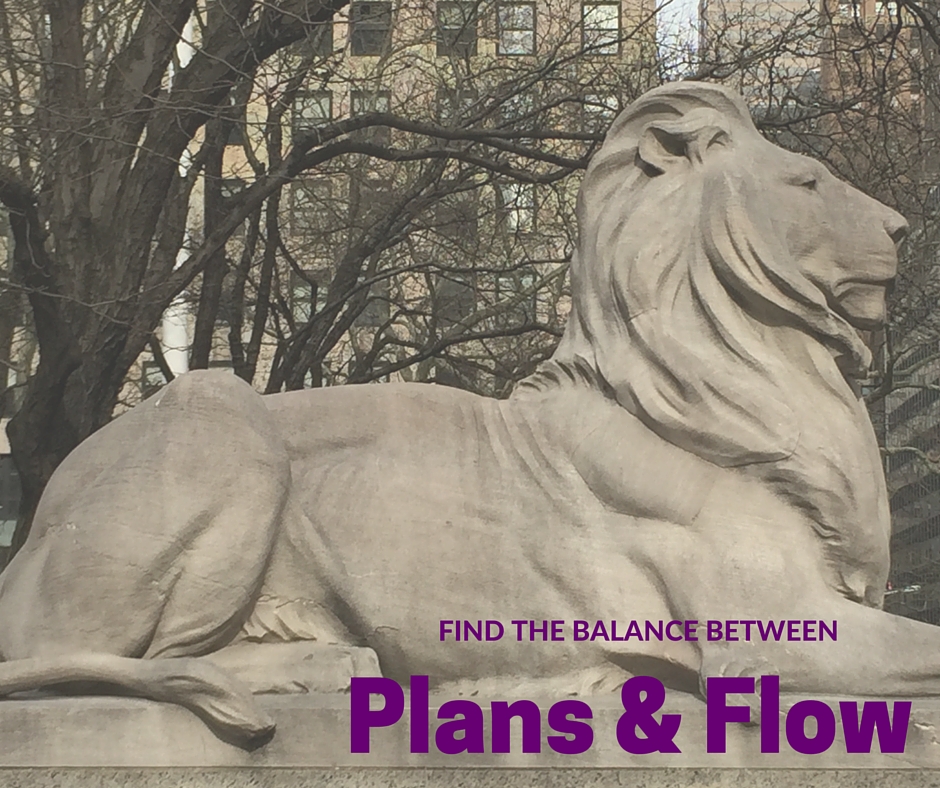 I’ve been flying through life at break-neck pace, and that’s how I ended up in New York with hardly an inkling of a plan. I knew I needed to be in town by Thursday mid-day for a meeting, and that the conference spanned the weekend. Other than that, I’d hardly consulted the schedule. I figured I’d find nooks and crannies in my schedule to explore New York, particularly since my husband was joining me for the weekend.
I’ve been flying through life at break-neck pace, and that’s how I ended up in New York with hardly an inkling of a plan. I knew I needed to be in town by Thursday mid-day for a meeting, and that the conference spanned the weekend. Other than that, I’d hardly consulted the schedule. I figured I’d find nooks and crannies in my schedule to explore New York, particularly since my husband was joining me for the weekend.
So, I flew in late Wednesday night and woke up Thursday morning with an empty slate. What to do?
My first thought was: I wish I’d made a plan. But my second thought was filled with curiosity: I wonder what’s around the corner from this hotel?
And the adventure began.
It turns out that around every corner in New York, surprises wait. Cathedrals, libraries, museums, unusual shops, coffee bars, restaurants, artists, musicians, a kaleidoscope of people–each a walking story in and of themselves. As I stepped onto the sidewalk in New York, I was swept into the bustling, vibrant flow.

If I’d had a plan, I’d have been frustrated. I can picture myself, head down against that cold New York wind, struggling toward my destination, missing all the surprises along the way. But without a plan, I could soak it all in, see what I didn’t know to look for, discover the richness that isn’t in the tour books.

I wonder how often my plans keep me from being in the flow?
Flow is quite different than drift. It’s true that without a plan, we have the potential to drift through life and find ourselves where we never would have chosen to be. But flow is a shortcut. Consider a character in a book who sets out to achieve a goal. By the end of the book, she nearly always finds that what she really needs is something deeper, more meaningful, than the goal she originally set. The plans she sets launch her into motion, but soon, the plan tends to get in the way. Why? Because she’s so focused on her idea of how things ought to go, she doesn’t allow margin for surprise. She doesn’t allow herself to be swept into the bigger story of what’s happening all around her. She’s struggling against the flow.

So how do we strike a balance between plans and flow?
- Start by not being afraid to set a goal. Take into account what’s true in your life, and using those givens, set a goal that points you in a specific direction.
- Head out boldly. Let your goal inform the questions that you ask and the experiences you seek out.
- Listen closely. Pay attention. Allow yourself to follow your curiosity. I wonder what’s inside that cathedral? Go ahead, wander a bit. Your goal will still be there waiting for you, but maybe you’ll see it in richer color through the stained glass windows.
- Look for secret passages and hidden doorways. Drift happens when we lose our way by following every distraction. Flow is being caught in an ever-increasing current and heading deeper in. Why did I set this goal? What’s underneath? What’s urging me onward?
- Keep in mind that “plan” is a noun and “flow” is a verb. When you’re in flow, there’s no destination. No one can stay in flow indefinitely. You’ll find beauty and joy along the way, and have a grand, meaningful adventure. And every now and again, you’ll get tangled in the weeds. When that happens, it’s time, again, to go back to the beginning and set a new plan.

Where are you right now? In a planning phase? Drifting? Flowing? Do you have particular questions you ask yourself that help you find flow? If so, I’d be so grateful if you’d share them. Share below, or feel free to connect with me on Twitter (@naomikinsman) or Facebook.
Here’s to you and your grand adventure!
—
Psst… Do you know about Naomi’s Writerly Play Kit: a weekly collection of curated resources, inspiration and encouragement? Keep your creative spark ablaze … sign up for exclusive access here.






 I’ve never been much of a numbers girl. When someone asks what nine times twelve is, I’m reminded of those pages filled with multiplication problems and the clock tick, tick, ticking away. Even now, the memory makes my heart take flying leaps against my rib-cage.
I’ve never been much of a numbers girl. When someone asks what nine times twelve is, I’m reminded of those pages filled with multiplication problems and the clock tick, tick, ticking away. Even now, the memory makes my heart take flying leaps against my rib-cage.  Dorothy wanted to find her way home. Harry Potter longed to have his parents back. Luke Skywalker craved an epic adventure. These desires were strong, strong enough to cause Dorothy, Harry and Luke to take action and say yes to the unknown. But by the end of these stories, the goals the characters started out with had changed, grown, and transformed.
Dorothy wanted to find her way home. Harry Potter longed to have his parents back. Luke Skywalker craved an epic adventure. These desires were strong, strong enough to cause Dorothy, Harry and Luke to take action and say yes to the unknown. But by the end of these stories, the goals the characters started out with had changed, grown, and transformed.
 I’ve been flying through life at break-neck pace, and that’s how I ended up in New York with hardly an inkling of a plan. I knew I needed to be in town by Thursday mid-day for a meeting, and that the conference spanned the weekend. Other than that, I’d hardly consulted the schedule. I figured I’d find nooks and crannies in my schedule to explore New York, particularly since my husband was joining me for the weekend.
I’ve been flying through life at break-neck pace, and that’s how I ended up in New York with hardly an inkling of a plan. I knew I needed to be in town by Thursday mid-day for a meeting, and that the conference spanned the weekend. Other than that, I’d hardly consulted the schedule. I figured I’d find nooks and crannies in my schedule to explore New York, particularly since my husband was joining me for the weekend. 



